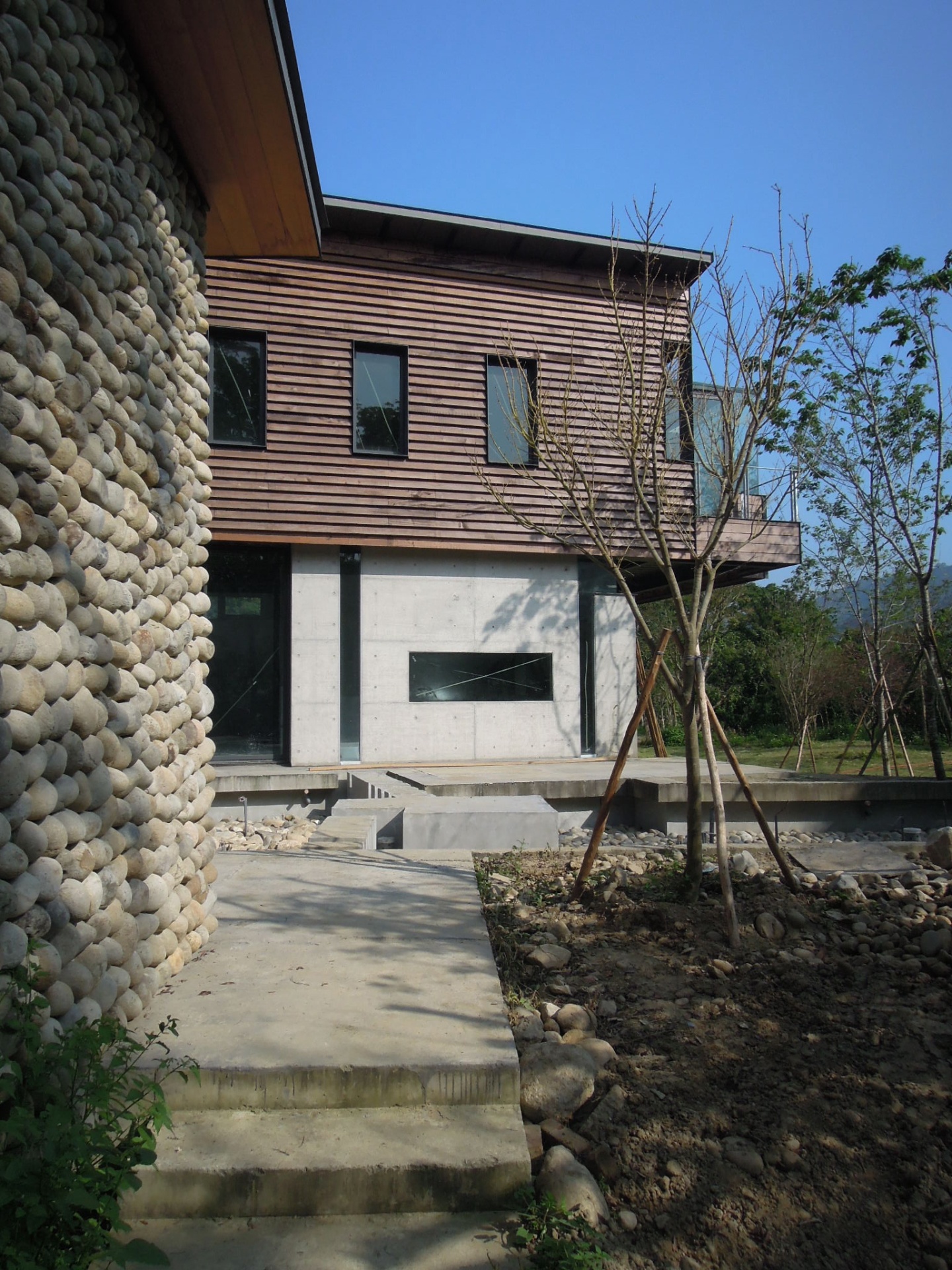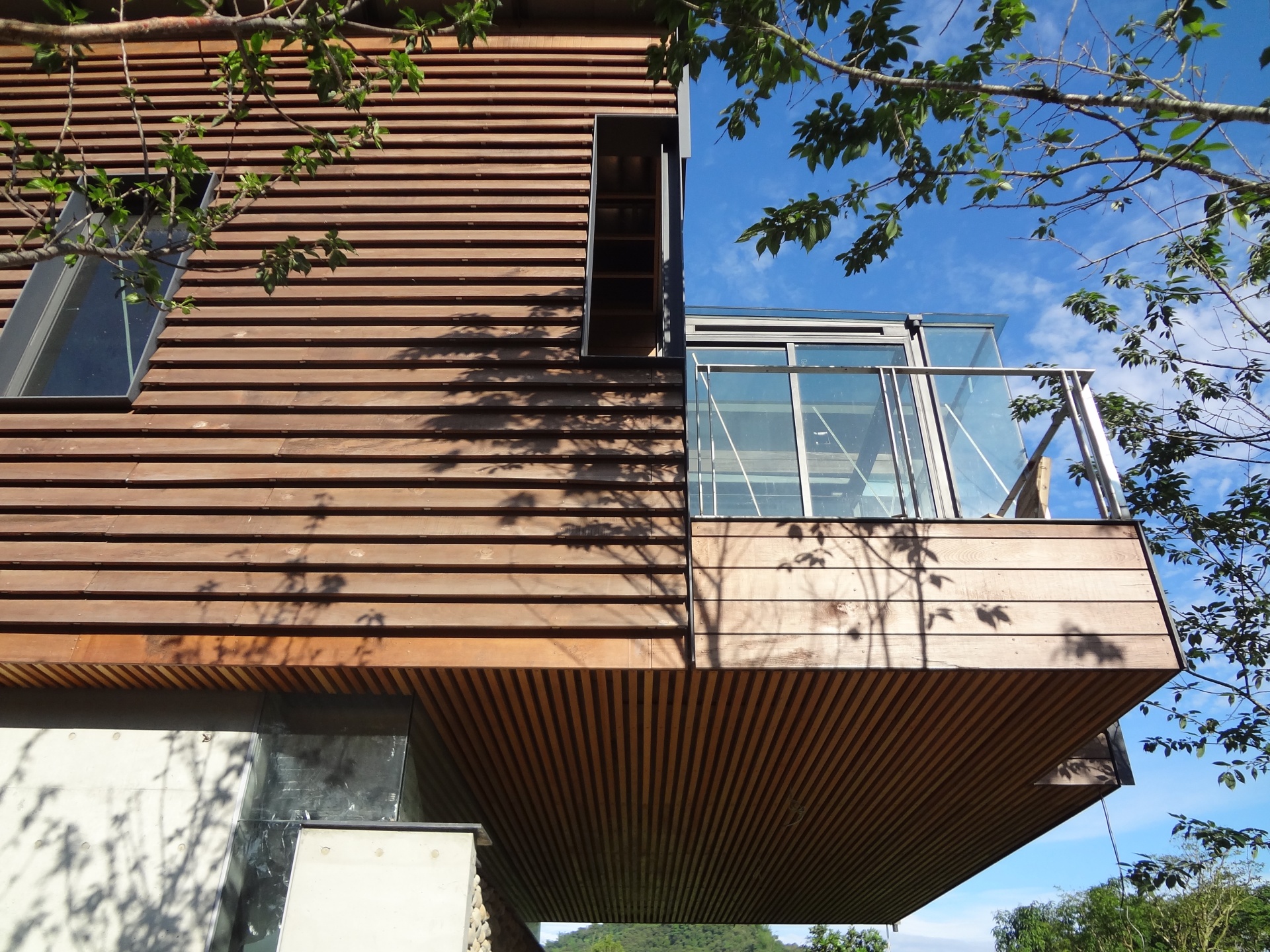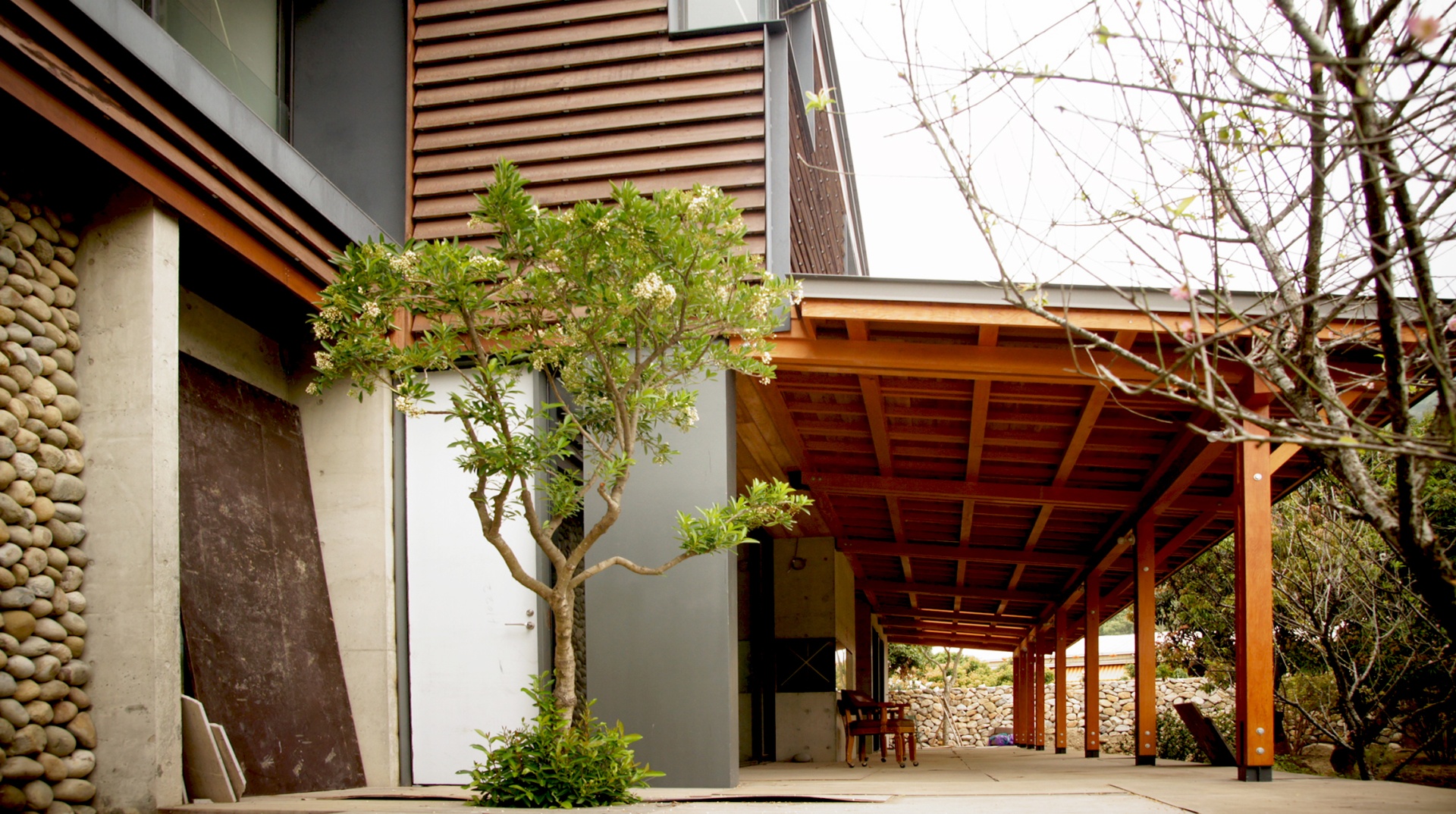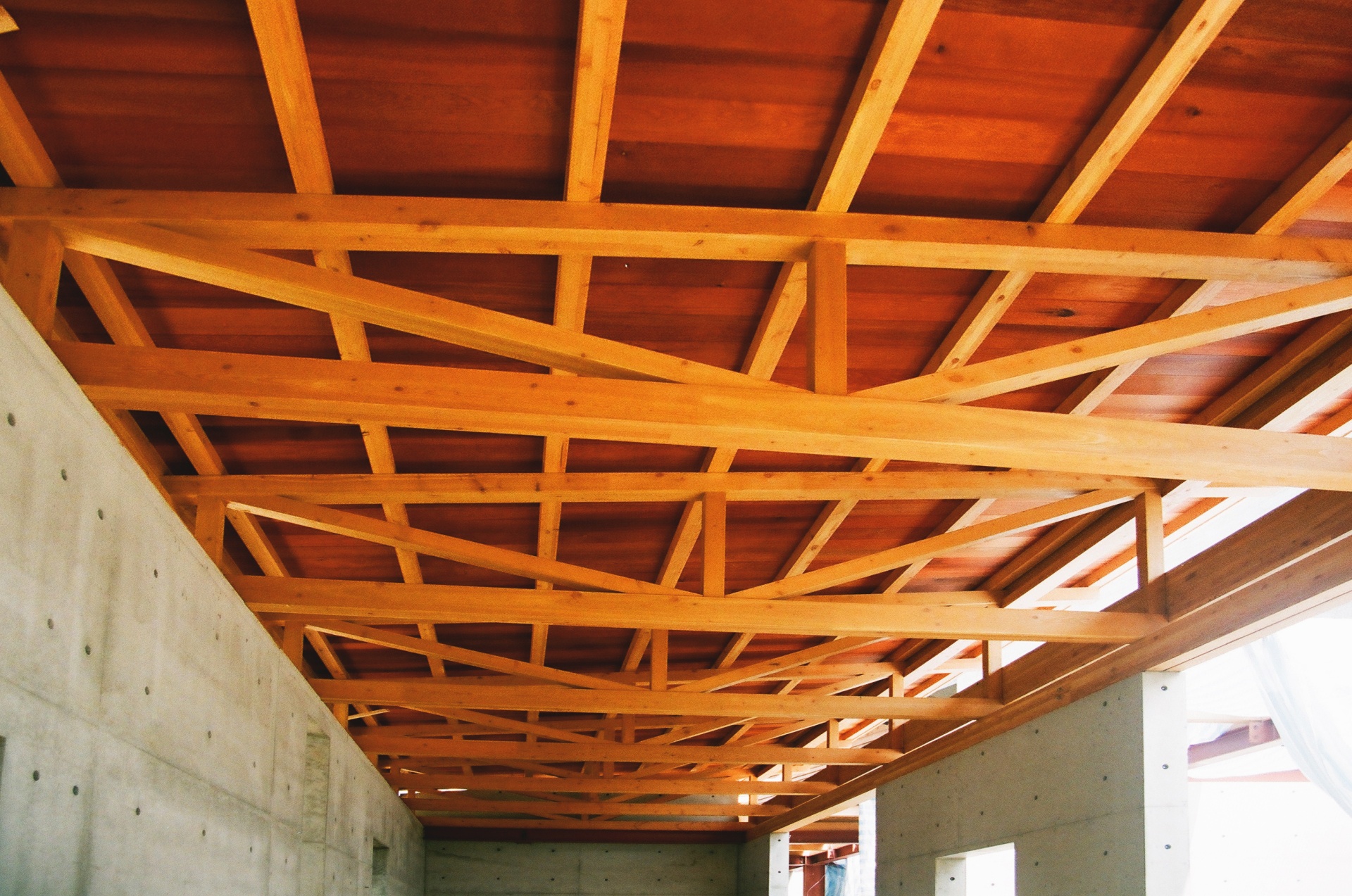
台中太平陳宅
The site is near the junction of Toubienkeng and Beikeng stream in Tai-Ping District, Taichung. According to Luban Jing, a classic of ancient Chinese Feng-Sui theory and construction, it is a treasure land with good Feng-Shui. As well, it is also the client’s playground in his childhood. There’s a prosperous temple with the history over hundreds of years on the north side, and stream with clear water and pebbles on the south. It is embraced by mountains with great scenery and fresh air.
We attempted to understand the character of the client, his philosophy of life and explore his thought about living through design process. We’ve been accompanying the client to select the trees, stones, timbers and other materials needed in the construction. We even went down to the stream to pick the pebbles for cladding the façade with the client and the constructor. Through the experience of exchanging and interaction, our values about living became more similar and gradually reaching the common consensus.
We scattered the whole architectural into three masses, and the garden into three levels, public, semi-public and private. By so doing, exterior and interior spaces formed a tortuous, circuitous, ambiguous and indistinct slow space. The movement in the garden and inside the building corresponded to Chinese garden architecture: firstly, obstructing, secondly, leading, and then open through, and also like theory of Chinese medicine focusing on rearranging the breath, easing the blood and relaxing your body. Isn’t architecture similar to it? The concept of creating Slow Architecture is to resist the shallowness caused by fast-speed needed in this generation of urbanization and globalization.
We attempted to understand the character of the client, his philosophy of life and explore his thought about living through design process. We’ve been accompanying the client to select the trees, stones, timbers and other materials needed in the construction. We even went down to the stream to pick the pebbles for cladding the façade with the client and the constructor. Through the experience of exchanging and interaction, our values about living became more similar and gradually reaching the common consensus.
We scattered the whole architectural into three masses, and the garden into three levels, public, semi-public and private. By so doing, exterior and interior spaces formed a tortuous, circuitous, ambiguous and indistinct slow space. The movement in the garden and inside the building corresponded to Chinese garden architecture: firstly, obstructing, secondly, leading, and then open through, and also like theory of Chinese medicine focusing on rearranging the breath, easing the blood and relaxing your body. Isn’t architecture similar to it? The concept of creating Slow Architecture is to resist the shallowness caused by fast-speed needed in this generation of urbanization and globalization.
| Exhibitions |
|
|---|---|
| Category | Residential |
| Location | 台中市 |
| Completion | 2006 |
01 / 07





